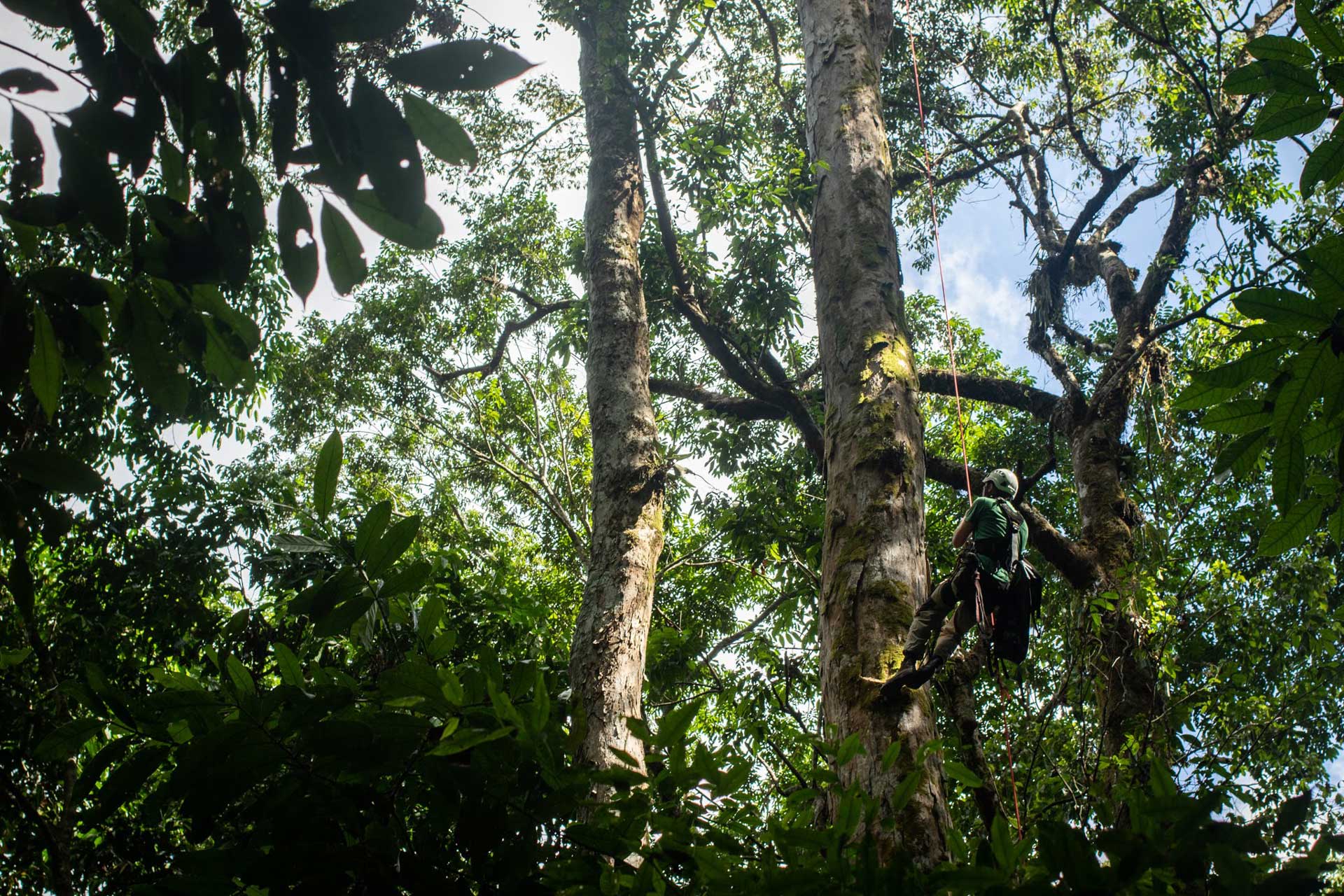
Maranthes panamensis
Maranthes panamensis
Pejibaye
Audio
English Audio
Audio en Español
Plant Story
This tree is called pejibaye because of the aroma of its inner bark, which is reminiscent of the fruit of the pejibaye palm (Bactris gasipaes). The tree reaches up to 35 meters and grows a grayish bark with a sandy inner layer. Its leaves boast a pair of glands at the base, which facilitates the species’ identification. Its white flowers are likely pollinated insects, and its drupe fruits are consumed by arboreal animals and birds. The species grows in humid primary forests, especially those in mountainous areas, and has been recorded from southern Nicaragua to Panama; in Costa Rica, it grows along the Atlantic slope and in the South Pacific.
Historia de la planta
Este árbol es llamado pejibaye por su peculiar olor de la corteza interna muy similar al del fruto de la palma de pejibaye (Bactris gasipaes), alcanza 35 metros de alto, la corteza es grisácea, arenosa por dentro. Las hojas poseen un par de glándulas muy características en la base. Las flores son blancas, probablemente polinizadas por insectos, los frutos son drupas, consumidas por animales arbóreos y aves. Crece en bosques primarios, preferiblemente de serranías, con bosques húmedos a muy húmedos. Se conoce desde el sur de Nicaragua, hasta Panamá, en Costa Rica en toda la vertiente atlántica y en el pacífico sur.
Plant details
Plant Information
Botanic Name:
Maranthes panamensis
Common name(s):
Pejibaye, Pejibaye
Family
Chrysobalanaceae
Phenology
Flowering Months:
January, February, August
Fruiting Months:
May, Jun, July, December
Conservation
IUCN category:
Not evaluated / No evaluado (NE)
CITES:
Not protected / Sin protección
Interesting Links
Plant Locations
Pejibaye
Plant details
Audio
English Audio
Audio en Español
Story / Historia
Plant Story
This tree is called pejibaye because of the aroma of its inner bark, which is reminiscent of the fruit of the pejibaye palm (Bactris gasipaes). The tree reaches up to 35 meters and grows a grayish bark with a sandy inner layer. Its leaves boast a pair of glands at the base, which facilitates the species’ identification. Its white flowers are likely pollinated insects, and its drupe fruits are consumed by arboreal animals and birds. The species grows in humid primary forests, especially those in mountainous areas, and has been recorded from southern Nicaragua to Panama; in Costa Rica, it grows along the Atlantic slope and in the South Pacific.
Historia de la planta
Este árbol es llamado pejibaye por su peculiar olor de la corteza interna muy similar al del fruto de la palma de pejibaye (Bactris gasipaes), alcanza 35 metros de alto, la corteza es grisácea, arenosa por dentro. Las hojas poseen un par de glándulas muy características en la base. Las flores son blancas, probablemente polinizadas por insectos, los frutos son drupas, consumidas por animales arbóreos y aves. Crece en bosques primarios, preferiblemente de serranías, con bosques húmedos a muy húmedos. Se conoce desde el sur de Nicaragua, hasta Panamá, en Costa Rica en toda la vertiente atlántica y en el pacífico sur.
Plant Information
Botanic Name
Maranthes panamensis
Common name(s)
Pejibaye
Family
Chrysobalanaceae
Phenology
Flowering Months
January, February, August
Fruiting Monts
May, Jun, July, December
Conservation
IUCN category
Not evaluated / No evaluado (NE)
CITES
Not protected / Sin protección
Interesting Links
Plant Locations
Post A Comment
You must be logged in to post a comment.






No Comments